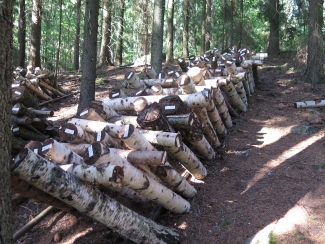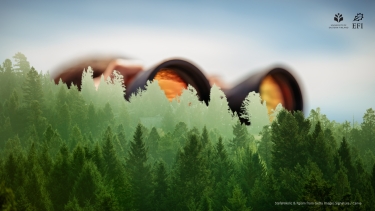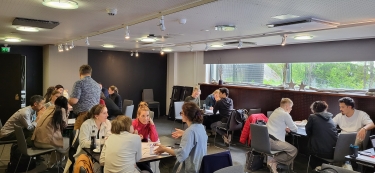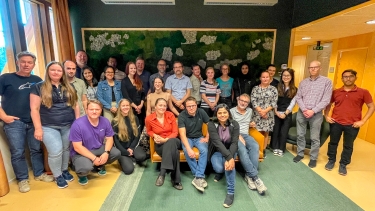Mushroom cultivation as additional income for forest owners

One of the ways to bring additional income to forest owners is to practice intensive mushroom farming. This was the topic of a recent workshop arranged by the AFINET-project as part of the Finnish Agroforestry Innovation Network’s activities. AFINET (AgroForestry Innovation NETworks) aims to foster the exchange and the knowledge transfer between scientists and practitioners in agroforestry.
Mushrooms grown on birch logs
Shiitake and oyster are popular mushrooms used in cooking and reishi is a medicinal mushroom frequently used in East Asia. They can all be cultivated intensively on birch logs piled in stacks. Aspen, alder and oak logs are also a suitable for growing these mushrooms. During the workshop, the participants were taught how to use a mushroom drill and mushroom dowels and how to make a mushroom totum which is suitable for large logs. When managed well, shiitake and oyster mushrooms can be harvested twice during the growing season, with about 8 weeks between harvests. A log can produce mushrooms for about 3-4 years.
Also shaga mushroom is cultivated, but the method is less intensive and can be used as a forest management technique particularly suitable in combination with continuous cover forest management. Like reishi, shaga is a medicinal mushroom used in East Asia but also e.g. in Finland. Shaga mushroom cultivation can be combined with ecological forest management and can bring significant additional income for the forest owner from the sales of mushrooms. Inoculation with shaga mycelia is recommended on those birches which will be cut anyway during the first thinning. The value of birches harvested during first thinning is only a couple of euros, but the production of shaga mushrooms on a single birch can be worth 100 euros. After inoculation, the first shaga mushrooms are harvested after 5-6 years. Thereafter, it is still possible to get two additional mushroom harvests in the fifth year after the last harvest. Then the tree can be harvested and sold as fire or fibre wood. This method of mushroom cultivation in combination with continuous cover forestry makes ecological forest management very profitable and it is possible to get a higher value from your forest as compared to clearcutting. During the course, the participants got some hands-on experience on which trees would be best to select and hereafter they could inoculate the birches themselves.
The workshop was arranged in collaboration with Gifts from Metsä and was attended by stakeholders including farmers, people who just started a mushroom business or had plans to start one, researchers and people who would like to grow mushrooms in their own garden or balcony. The course included both theory about mushroom cultivation and practical work where the participants could inoculate trees with mushroom mycelia themselves. At the end of the day, all participant received two bags of mushroom dowels with a mushroom species of their choice and a birch log as a growing substrate. Everyone was now very eager to start and try mushroom cultivation at home!
Links:
Gifts from Metsä https://www.giftsfrommetsa.fi/
Finnish RAIN: https://www.facebook.com/AFINETSUOMI/



